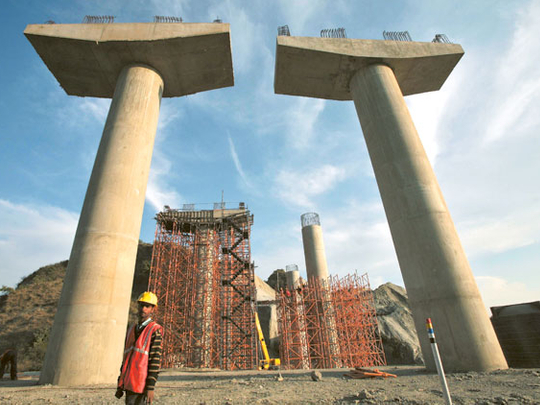
New Delhi: India’s finance minister will present a belt-tightening budget this week in an attempt to win back investor confidence, steering clear of populist measures even though polls loom, analysts say.
Investors have increasingly been giving a wide berth to Asia’s third-largest economy — deterred by corruption scandals, suffocating red tape, high inflation, sharply slowing growth and unravelling public finances.
Now Finance Minister P. Chidambaram, who is presenting his last full budget before Indian voters head to the polls early next year, must persuade markets that the government is serious about nursing the economy back to health.
The budget for the financial year to March to be unveiled on Thursday will likely be “a triumph of prudence over populism”, said Credit Suisse economist Robert Prior-Wandesforde.
Chidambaram has already made some austerity moves, cutting spending by nine per cent this year, and a 10 per cent cut is expected for next year in the budget, said Deepak Lalwani, head of investment consultancy Lalcap in London.
“India’s budget is probably going to be the most austere one in many years — deep cuts across departments are on the cards,” Lalwani said.
Chidambaram assured global investors on an overseas roadshow last month that the left-leaning Congress party-led government would present a “responsible budget”.
He has called the government’s fiscal deficit targets of 5.3 per cent of gross domestic product for this financial year and 4.8 per cent next year “red lines” that cannot be breached.
India must put its financial house in order to avoid a credit ratings downgrade that would deter vital investment needed to upgrade its dilapidated infrastructure from roads to ports, analysts say.
“A downgrade would take India to ‘junk” status’ — a severe embarrassment for a country aspiring to become a global economic power” and further damage economic recovery prospects, said Lalwani.
India is targeting raising $1 trillion in investment over the next five years to spend on infrastructure whose shabby state is seen as a key impediment to economic growth.
Foreign direct investment in India has fallen by 42 per cent in the eight months from last April to December from the same period a year earlier, according to the latest official data.
But analysts warn that government spending cuts carry risks of further weakening consumer demand and consequently economic growth, which is expected to be 5.0 per cent to 5.5 per cent this year, the lowest in a decade, analysts say.
“The government has to walk a tightrope” between “lack of fiscal credibility on one hand and growth risks on the other,” said senior HSBC economist Leif Eskesen.
But Chidambaram will be tapping public finances for the government’s long-awaited food security legislation targeting India’s poor masses that Congress hopes will turn around its sagging electoral fortunes.
The measure — fulfilling a promise by Congress president Sonia Gandhi in the 2009 election campaign which brought the party back to power — will supply cheap grain to over 60 per cent of the nation’s 1.2 billion population.
Chidambaram insists he can steer India’s growth back to six to seven per cent next year despite the doubts of many economists, but that is still below near double-digit levels achieved before the onset of the global financial crisis.
And while much of the world would envy even six per cent growth, India says it needs at least nine to 10 per cent expansion to significantly reduce poverty.
“What sounded like a big bang (in terms of growth) at one stage is ending in a whimper,” said T.N. Ninan, editorial director of leading Indian financial daily Business Standard in a weekend column.
“No wonder Mr. Chidambaram’s final budget is essentially in the nature of a salvage operation,” he said.












